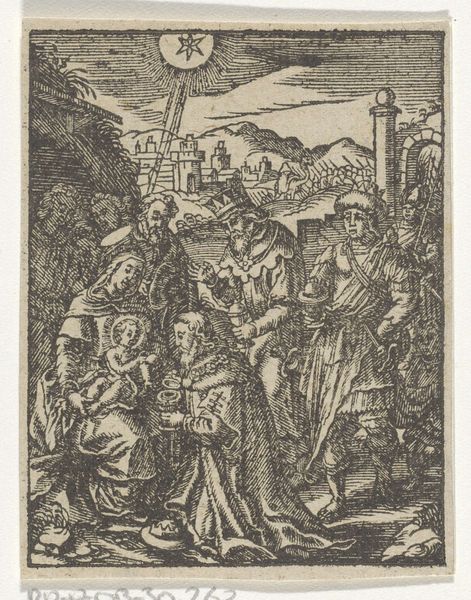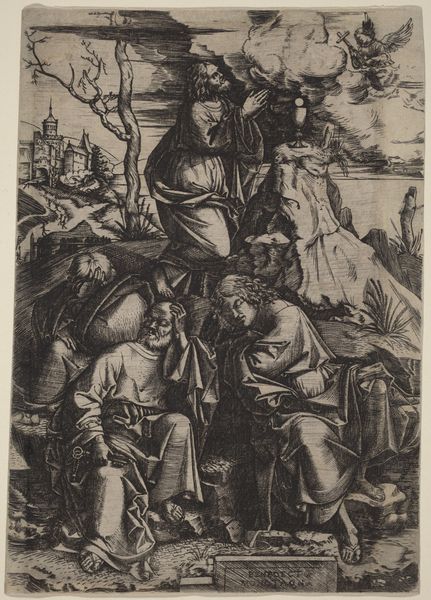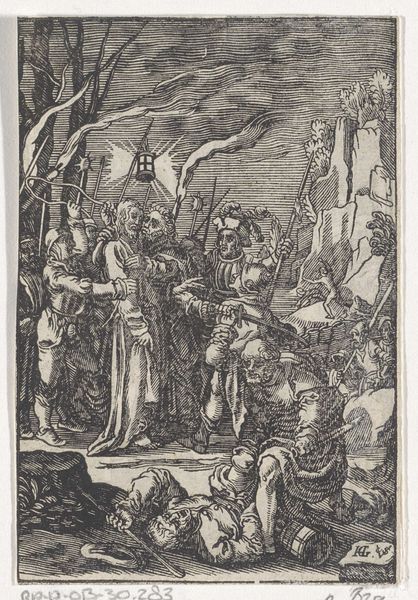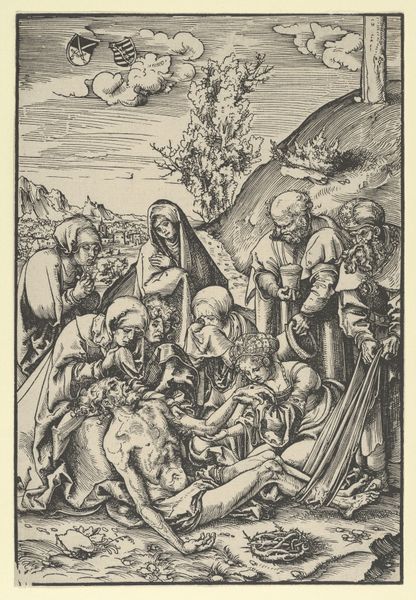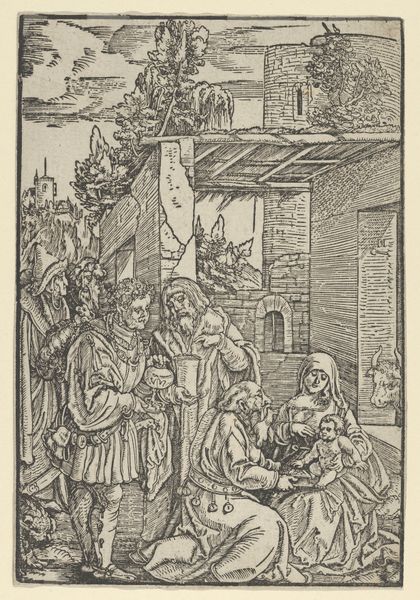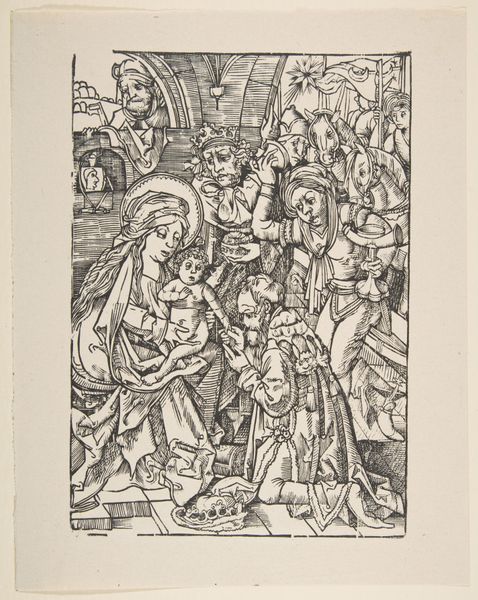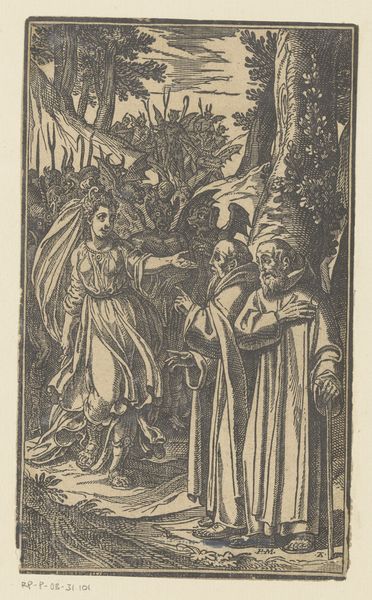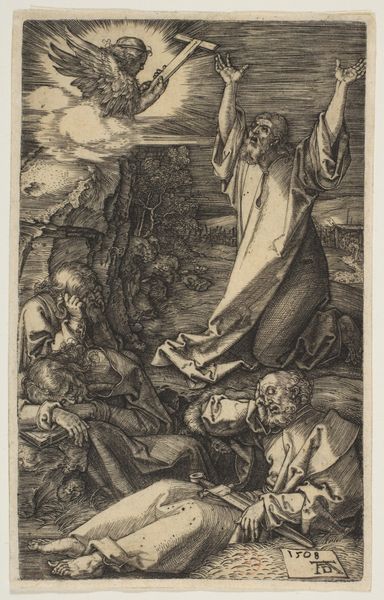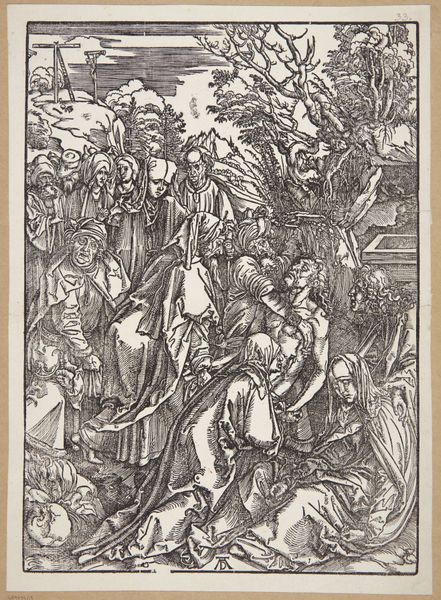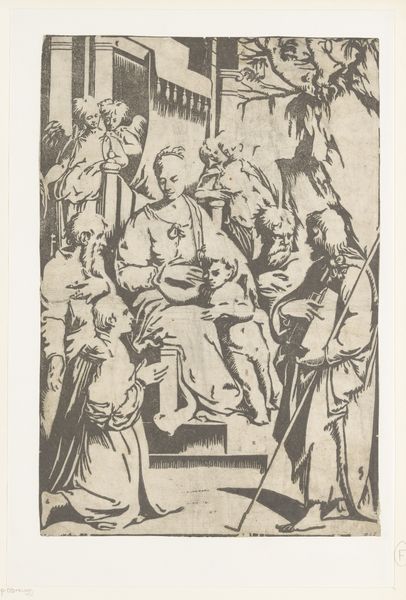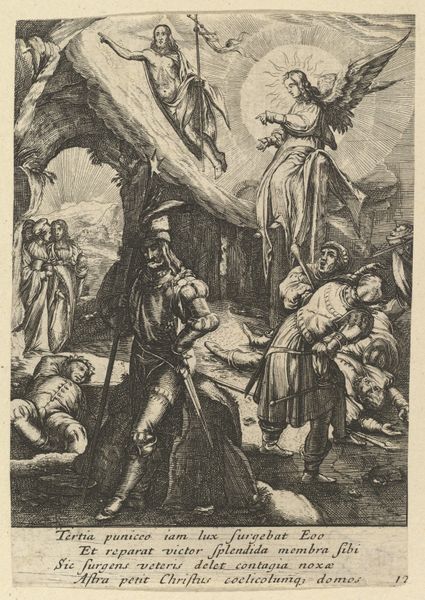
The Visitation, from The Life of the Virgin (copy) 1505 - 1515
0:00
0:00
drawing, print, intaglio, woodcut, engraving
#
drawing
#
ink drawing
#
pen drawing
# print
#
intaglio
#
dog
#
landscape
#
figuration
#
woodcut
#
line
#
history-painting
#
northern-renaissance
#
engraving
Dimensions: sheet: 11 9/16 x 8 in. (29.4 x 20.3 cm)
Copyright: Public Domain
Editor: We’re looking at "The Visitation, from The Life of the Virgin (copy)," an engraving by Albrecht Dürer, dating from around 1505 to 1515. The intense detail and stark contrasts create such a powerful feeling of solemnity, a sense of weighty anticipation hangs in the air. What stands out to you in this piece? Curator: Beyond the captivating detail typical of Dürer, I see a potent commentary on female kinship and societal roles. The Visitation, a biblical event, is framed within a world grappling with issues of lineage and expectation. Look at how Elizabeth and Mary, both pregnant under miraculous circumstances, connect in a patriarchal society that often silences women’s voices. What does their embrace signify in that context? Editor: Hope, maybe? That even within oppressive structures, there’s solidarity and understanding between women? Curator: Precisely! Dürer wasn't just illustrating a religious scene. He was engaging with the socio-political climate of his time. Consider also, who does the labor of creating a future generation, both physically and emotionally. He is capturing a revolutionary act—two women supporting each other and creating their own lineage beyond the narrative created for them. Even the landscape feels complicit to that sense of self creation; have you ever noticed the landscape beyond this single event? Editor: Now that you mention it, the background is more pronounced than other renditions of the same subject that I've seen. Curator: Indeed, and how does that change how you interpret this print? Editor: I'm beginning to see Dürer wasn't simply depicting a biblical scene; he was highlighting a revolutionary moment of female agency within the constraints of a patriarchal world. Curator: Exactly! This work pushes us to reconsider conventional readings of religious art through a feminist lens. Editor: Thanks. I wouldn't have looked at it that way without your guidance. Curator: It's about engaging with the artwork and making it speak to us.
Comments
No comments
Be the first to comment and join the conversation on the ultimate creative platform.

